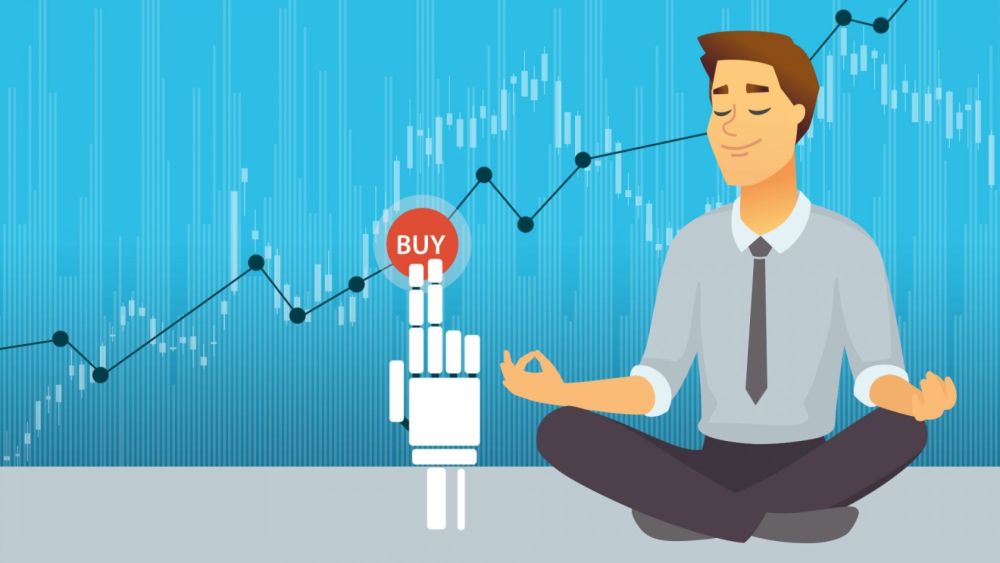Learning The Automated Algo Trading Basics
Automated algo trading can also be referred to as automated trading, algo-trading, or black-box trading. It uses a computer program designed to follow particular instructions (called an algorithm) to place your trades. The trades can generate a profit at frequencies and speeds that are impossible at the human trader level.
The defined rules and sets are based on price, timing, quantity, and other mathematical models. Of course, the trader has more profit opportunities with algorithmic trading. However, algo-trading also ensures that the market is more liquid and the trading is systematic because it doesn’t use human emotions for the trading activities.
A Practice Example
Understanding the algorithmic trading basics is key. Consider if you used these trade criteria:
- You purchase 50 shares of stock when the 50-day moving average goes over the 200-day moving average. (Moving average means the average of past data points, which smooths out daily price fluctuations and helps to identify trends.)
- You sell your stock shares when the 50-day moving average dips below the 200-day moving average.
With these two instructions programmed into the computer, the program automatically monitors the stock prices and moving average indicators you set up to place your buy and sell orders when your defined conditions are met. You don’t have to monitor the live prices or graphs, nor do you have to put in your order manually. The trading system does it all automatically because it identifies the opportunity as it arises.
Advantages of Algo Trading
Algo-trading has a variety of benefits. For example, your trades are executed at the best prices and the trade order placement is always accurate and instant. Therefore, you have a better chance of executing the trade at your desired level. Plus, the trades are timed instantly and correctly, which helps you avoid significant price changes. You can also see a reduced cost for transactions while the system automatically checks multiple markets and conditions.
Algo-trading also reduces your risk of making manual errors when you place your trade and can be back-tested using real-time and historical data to determine if your strategy is viable.
Most of the time, algo-trading is HFT (high-frequency trading), which tries to capitalize on the ability to place more orders at faster speeds through various markets while utilizing multiple parameters based on your pre-programmed instructions.
It’s used in many investment and trading activities. Those who prefer long- or mid-term investing or buy-side firms can use it to purchase their stocks in larger quantities without influencing the stock price. Short-term traders can also use it to create more liquidity for sellers. Systematic traders can use algo-trading to program the rules more efficiently so that the program trades for you automatically.
Primarily, algorithmic trading is more systematic than active trading that requires instinct and intuition.
Algo Trading Strategies Available
Any algorithmic trading strategy requires you to have an opportunity that is identifiable as profitable to improve your earnings. Common trading strategies can include index-fund rebalancing, trend-following, and other strategies.
Trend-following strategies are the most common option and follow trends in channel breakouts, moving averages, price-level movements, and other technical indicators. They’re the easiest strategies to implement because they don’t require you to make price forecasts or predictions. The program initiates trades based on preferred trends, which can easily be implemented through algorithms without having to deal with predictive analysis. Many people choose the 200- and 50-day moving averages strategy along with trend-following.
Index fund rebalancing is another strategy. Index funds use defined periods for rebalancing to ensure that the holdings are on par with the benchmark indices. Algorithmic traders can create profitable opportunities by capitalizing on the expected trades that offer up to 80 basis points, though the exact number depends on how many stocks are in the index fund before the rebalance occurs.
-

The rhytm beneath the noise
-

You Don’t Need a Trading Style. You Need an Edge.
-

Consistency Isn’t the Goal—It’s the Outcome
-

What 2 Quadrillion Data Points Told Us
-

Math and Physics-Based Trading in Any Market Condition
-

Do not worry about anomalies
-

Consistency should not be the goal. Consistency should be the result.
-

Stop canceling fridays
-

The Elliott Wave Forecast is Subjective, Bias Driven And Backwards looking
-

Finding patterns in market data

